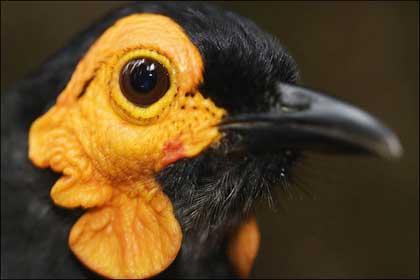The treasure of Papua

In Papua New Guinea, an expedition of the Conservation International has discovered a huge treasure: a territory that has no trace of human action, in which have found countless animal and vegetable species never seen and others supposedly disappeared.
The bird of the image, for example, is new for ornithologists. It is a bird of the Meliphagidae family, the only species of unknown bird found in New Guinea since 1939.
In addition, researchers are especially proud to have seen the bird of paradise of Berlepsch, Parotia berlepschi. Yellow bird XIX. Known at the end of the twentieth century (by the local hunters of New Guinea), to date it was not found again. The second day of the expedition saw a male of this species dancing to attract the female.
In addition, eleven other species of animals and plants have been found, never seen. Among them, a tree kangaroo (Dendrolagus pulcherrimus), more than twenty frogs, five palm plants and four butterflies.
The expedition is relatively new: December 2005 They arrived in this area by helicopter, specifically to the rainforest of the Foja mountains. And they say they intend to return because there is still much to discover.
A participant of the expedition, Dr. Bruce Beehler, has been interviewed on the BBC channel and, according to Beehler, if that space is not returned, out of human influence, it seems to remain the same. However, it seems convenient to protect the territory and make known to the public what has been found there, which facilitates its conservation through advertising.
In the course of the conversation, he is also asked if there are more sites of this type, and answers: “The world is so small today, we have it so dominated… Many have called it “paradise”, “garden of Eden” or “lost world” to that place where we have been. It is a pleasure to know that there are still places where human influence is not perceived.” Therefore, it is worth making an effort to protect this treasure.
Photo: B. B. Beehler / Conservation International
For more photos, click on the In Pictures section of this link.
Buletina
Bidali zure helbide elektronikoa eta jaso asteroko buletina zure sarrera-ontzian











